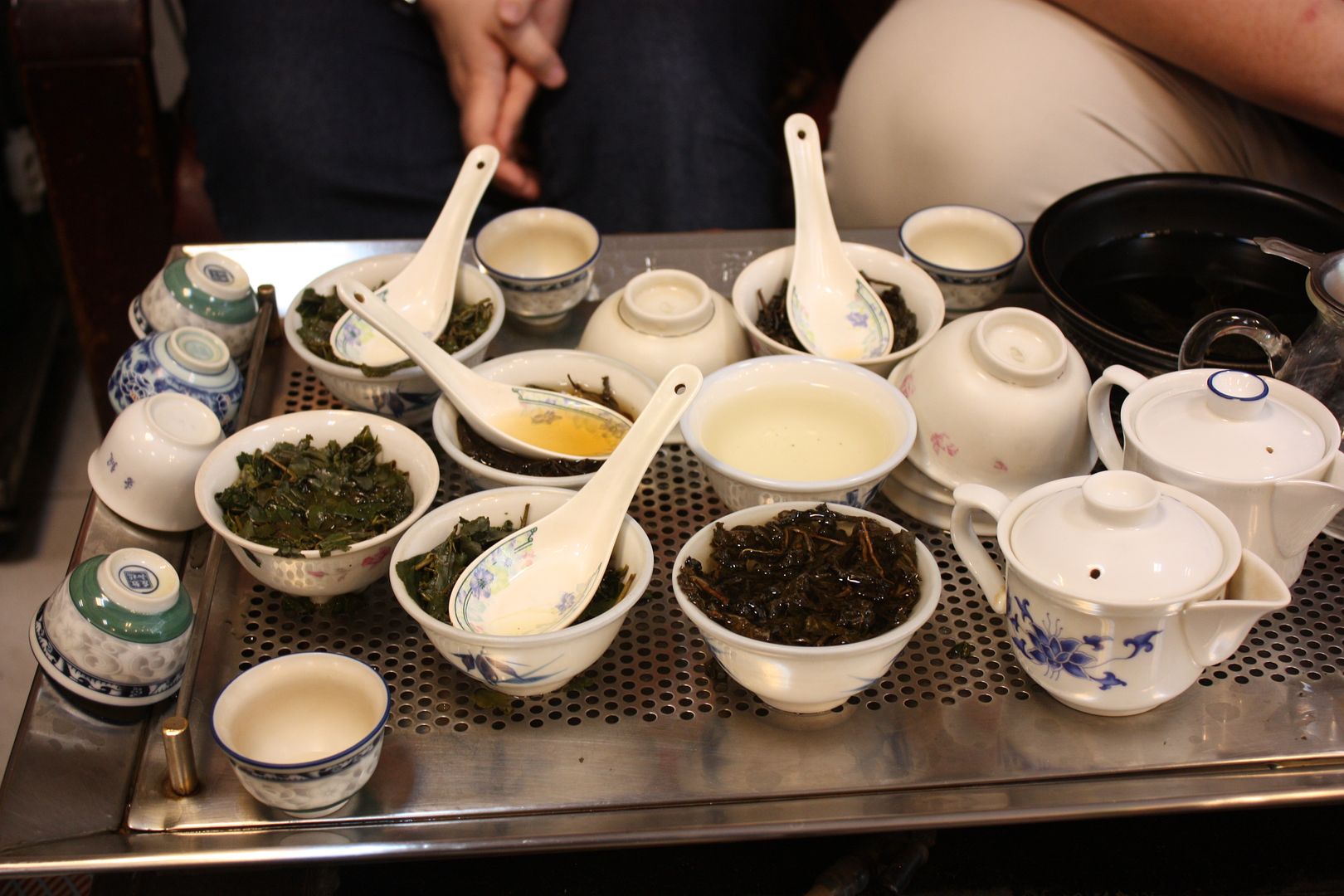I’m working on a paper on Oriental Beauty (dongfangmeiren æ±æ–¹ç¾Žäºº), the highly oxidized oolong from Taiwan. It’s still in nebulous form, but I thought it might be interesting to jot down a few things that I have found so far that are worthy of mention.
The first, and most important, is that the name Oriental Beauty didn’t seem to appear until at least the 1970s. Before that, the tea was called “pengfeng cha”, which some of you know as “bragger’s/liar’s tea”. The reason it was called that was because, supposedly, the tea fetched such a high price that the folks back home in the village (probably Beipu) didn’t believe him, so they called the tea pengfeng cha, and the name stuck.
Now, the question is – when did this happen? I’m sure some of you have read stories about how Queen Victoria drank this tea and thus called it Oriental Beauty. That, I’m afraid, is almost certainly bogus. The earliest use of Pengfeng cha that I have found so far comes from the Japanese period, during the 1930s. The first reliable looking thing that mentioned the tea by name is from a record of a supposed sale that took place during a tea expo in 1932. I don’t think the tea dates to much earlier than that, if at all.
Now, my hunch is that the Japanese were instrumental in helping set up the conditions that were necessary to create this tea. Up to that point, Taiwanese oolongs were traditionally processed, with a Wuyi style “two frying and two rolling” procedure. The oxidation, judging from the amount of time the tea spent in withering, wasn’t very high. It was only a few hours of withering, which I think is pretty low. So, there was definitely withering going on, but it wasn’t a lot of it.
In contrast, Oriental Beauty requires a lot of time of withering – in fact, there’s an extra step, after the initial frying, where the tea is left to sit on its own for a short amount of time with a wet towel on top. The leaves are still hot, so it’s a heated process where the tea is probably oxidizing rapidly, and then only after the tea has cooled somewhat does the rolling begin, maybe half an hour later. This is the crucial step that distinguishes Oriental Beauty from other types of Taiwanese oolongs, and is what gives it its distinctive flavour profile.
I wonder if this process has something to do with the Japanese introduction of black tea to Taiwan during the same period, where Assamica varietal teas were transplanted to Taiwan as the Japanese colonial administrators were trying to compete with Sri Lanka, India, and Indonesia for the world tea market. Taiwanese oolong was already a strong exporter at the time, with the US being a big market (imagine that). Taiwanese farmers were sent to learn how to make black tea from others – I wonder if, for example, that some cross-fertilization was happening at that time with regards to this. It is quite clear though that the system of rewards and competition for teas in Taiwan that was originally established by the Japanese turned out to have promoted this tea. That I think there’s no doubt.
It also seems like Oriental Beauty was always an expensive tea, mostly because of the lower volume, and also because it was harder to make. Now this is the only tea that still retained traditional processing methods – most Taiwanese oolongs have changed in the intervening years. Anyone who’s had aged oolong from 30 years ago can tell that things have changed, a lot, for most Taiwanese oolong, but an Oriental Beauty from 30 years ago and now are still processed more or less the same way. That, I think, is an interesting fact in and of itself to us tea nerds.








Yeah whisky prices have been leaking too, as well as luxury watches. I wrote a post maybe a decade ago…